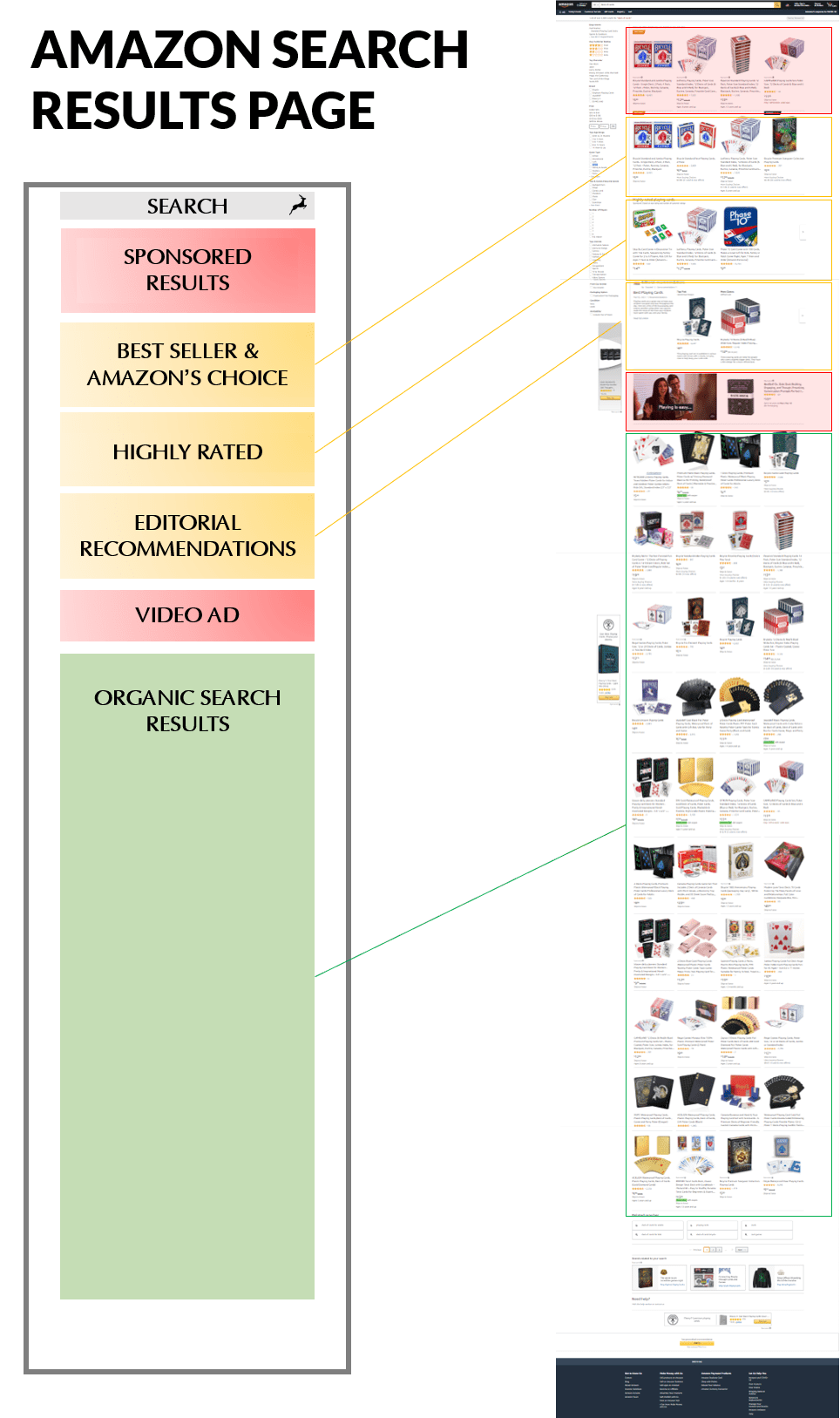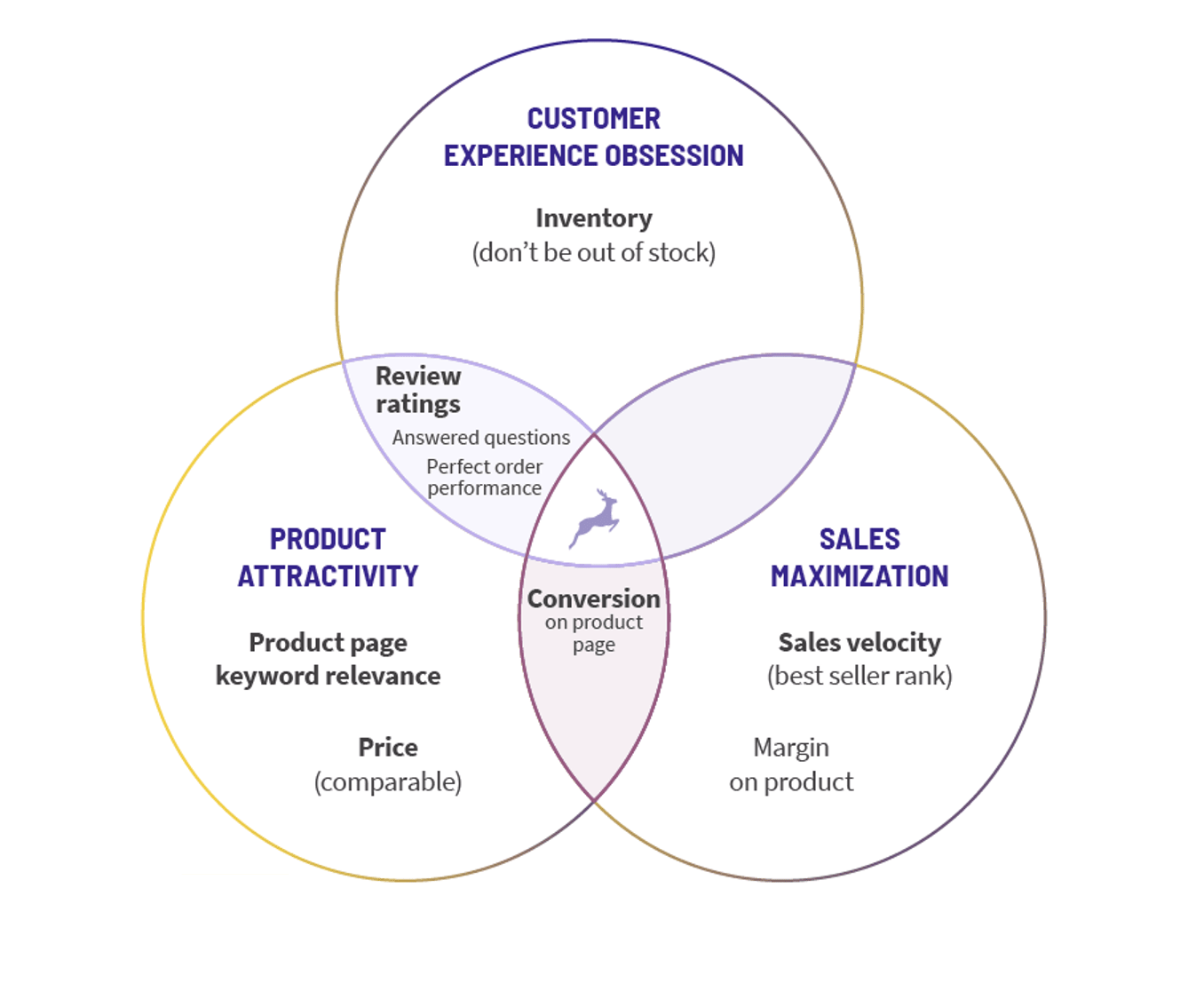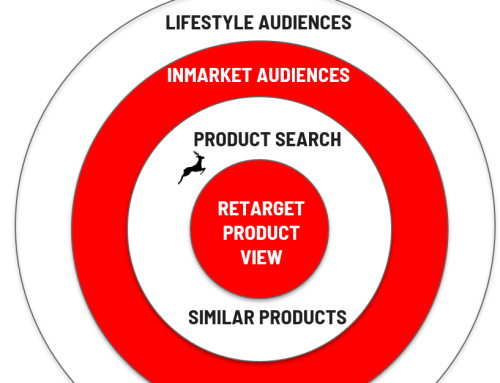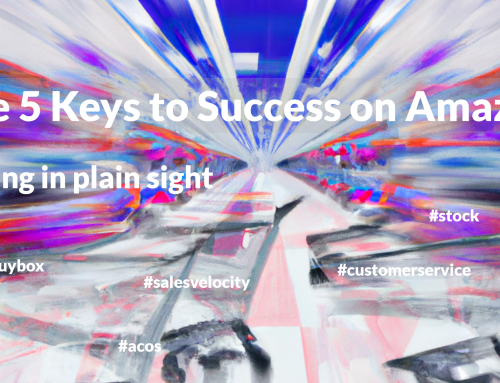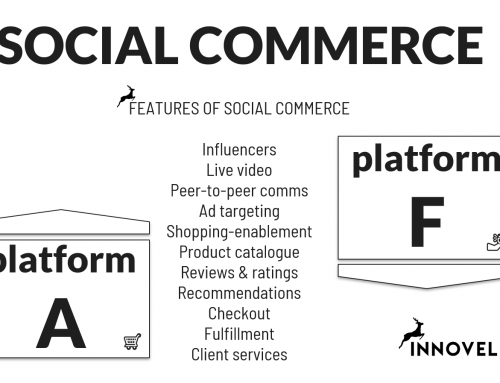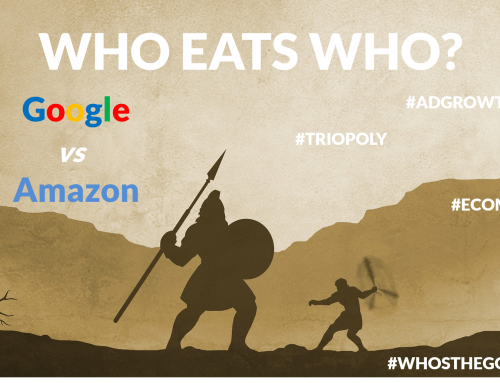Wouldn’t it be fantastic to know exactly what Amazon’s A10 algorithm requires for a product to rank at the top of search results when a user searches for a product? That would surely propel your product sales to incredible heights.
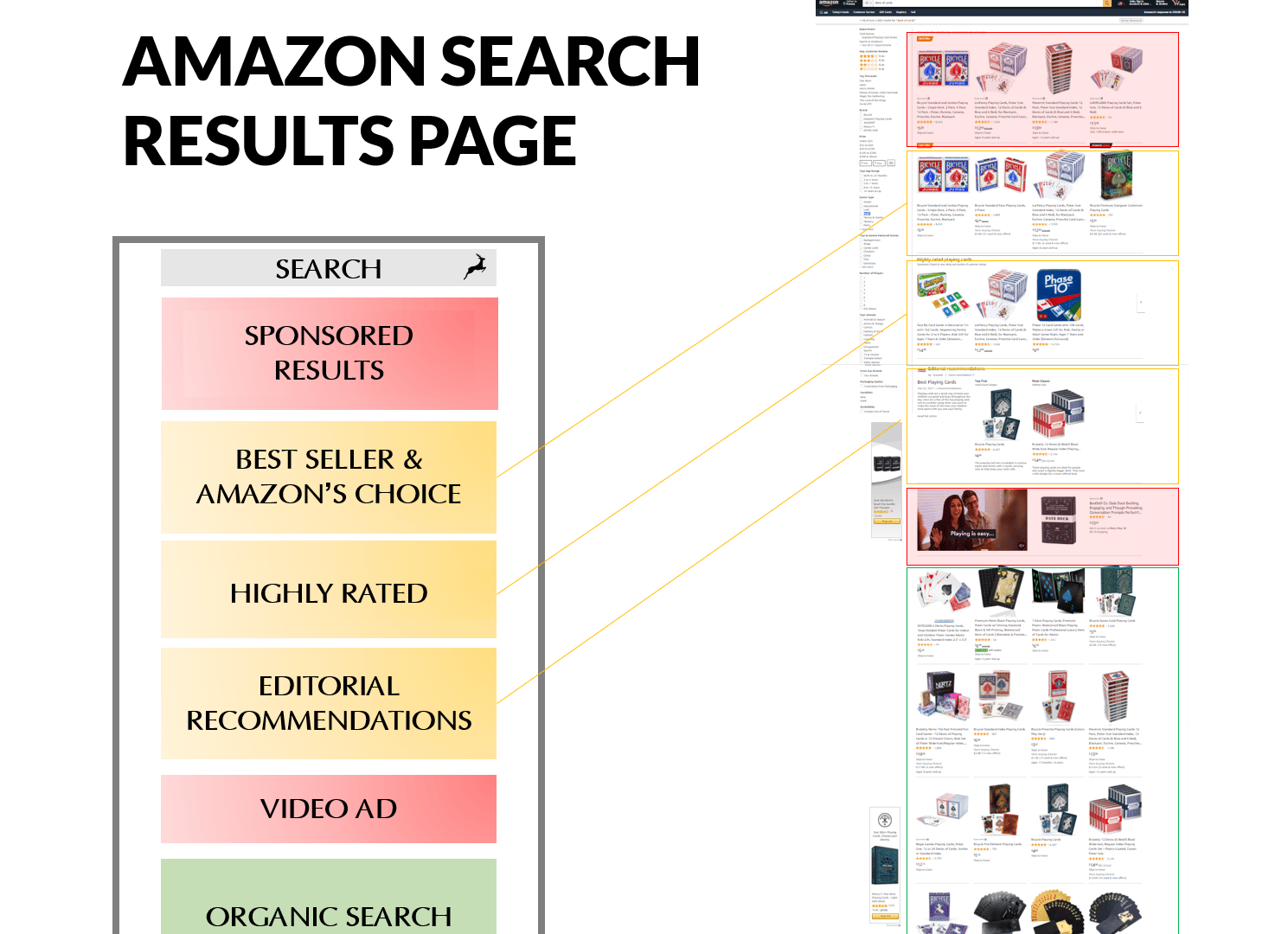
In the 1990’s web search engines were the big thing and ranking at the top of search results pages was like winning at the roulette. I remember how important it was to repeat the same keyword over and over again, and to have the keyword in the page title was crucial to ranking in Altavista – the now-forgotten predecessor to Google.
In those days, Search Engine Optimization – SEO, was a nascent industry and most experts were constantly testing to improve their understanding of each search engine’s algorithm. We counted the words, the characters on a page, the number of markup tags and their nature, we removed the “stop words”; fill words that were believed to not be indexed: is, in, at, the, or, because. After removing them, we calculated one of the key ranking factors in that generation of search engines, the keyword density. Could you get it up to 4-5% you were good – in some search engines you had to go even higher to rank.
With Google, the game changed somewhat. It was a new generation of search engine and suddenly, it was not only what was inside the page that counted, but also surrounding factors, and especially links pointing to the website. The nature of SEO changed, link building became a thing. The Google algorithm is believed to have hundreds of ranking signals, some known, some guessed, constantly evolving to provide the most relevant search results to users with changing search behaviour and evolving technology, and all the while keeping abuse at bay.
What is Amazon SEO?
Search Engine Optimization (SEO) is about maximizing the traffic one receives from clicks in search results pages. Users search on a variety of keywords, and the first challenge is to identify the ones that are relevant for your products. The next is to do everything in your power to appear in search results when a user searches using those keywords.
SEO is often consider as a free means of promotion as it does not take sponsored results and other paid ads in the search results page into account. Into consideration even.
SEO on Amazon is focused on optimizing the product listings for a merchant. Each individual product listing has the potential to rank in search results if it is relevant to the search a user performs. But like in traditional SEO, it is not only the page content that matters, external factors are important too. Popularity, authority, links pointing to a webpage are important for ranking on Google. But what is important to make your product rank in the Amazon search engine?
The Amazon search results page
The Amazon search results page is very long and holds many categories of information. The illustration reconstructs an entire search results page and shows the various categories as well as their order of appearance (click to enlarge).
The results categories we found on this page are the following:
- Sponsored results: The top row of products are all sponsored products. This means the brand runs Amazon Sponsored Products advertising targeting the keyword we searched for.
- Best seller & Amazon’s choice: A best selling product in a category carries a badge and is prominently and repeatedly shown in search results. Getting in that position is a huge challenge, as you need to reach the highest amount of sales in your category.
Amazon’s choice is an editorial choice made by Amazon editors based on a qualitative review. - Highly rated products: In this section, the products are the ones with the highest ranking based on user reviews. Another great spot to be in but very difficult to reach too.
- Editorial choice: A great chance to stand out if your product is differentiated and discovered by the editorial team.
- Advertising: In this case it was a video advertising results finalizing the custom made top of page spanning more than the first viewable page of results on your screen.
- Organic results: Below the custom-made section comes organic results. It is mainly here SEO makes a difference, and being at the top of this section is a great achievement and can boost sales for a product.
Main ranking factors in the Amazon search algoritm
You can appear prominently in the Amazon search results page via advertising, by being the best selling product, having the highest rating or by having the favour of editors. Beyond those instances, the order of the page is ordered by the algorithm. The A10 algorithm if that is indeed the current version.
There are three main categories of ranking factors in the Amazon search algorithm:
- Product attrativeness
- User experience
- Sales maximization
In our illustration we have shown the three categories as well as the individual ranking factors that play into the algorithm. These are further affected by a number of indirect factors as illustrated in the table below:
| Direct ranking factors | Indirect ranking factors |
| Inventory
Reviews Ratings Answered questions Order performance Keyword relevance Price DPV Conversion rate Sales velocity Margin on product |
Advertising
Prime eligibility Active discounts External traffic Keyword density A+ content CTR on results page |
The range of factors influencing search ranking is long, and optimizing for better ranking can be an ongoing process. There are however, some basic things that need to be in place in order for a product to appear in searches: available inventory, the right price, good ratings and relevant content.
Is Amazon A10 or Amazon A9 the current version of the algorithm?
Right about the time we built the above ranking factors overview in Summer 2020, industry observers reported changes in the Amazon algorithm. This made a number of people announced that Amazon had upgraded to A10. The number of changes in the algorithm wasn’t very high, though. So, was there really an update or is it still a tweaked A9 algoritm we have a hand?
I decided to check what my network on LinkedIn thought, and a majority of people believe the algorithm is now A10 but quite a few voted for A9.
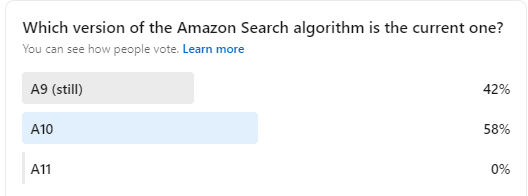
So if there was an update in the algorithm from A9 to A10, what did it do? Most observers mention a higher importance of traffic from external sources. This is a great case for directing external advertising into Amazon campaigns, something we call the “Drive-to-Amazon” strategy.
Some of the other things that changed with the A10 algorithm update was toning down the effect of Amazon’s own advertising and focusing less on sales velocity as opposed to content relevance. These observations are mostly based on hunches and anecdotal evidence.
In the end, who makes the call on what the algorithm is called? Amazon supposedly. But the company is not so accustomed with communicating about internal affairs, so I have found no confirmation of a shift to A10 anywhere. And, at end of the day, what does it matter?
All you need is excellent products, content, sales and fulfillment
Be it A9 or A10, the formula for success on Amazon is fairly well-known: Provide an excellent user experience, sell at a competitive price, and be an active player in the marketplace with a high rate of sales and great reactivity.
Succeeding on Amazon starts with building a strong foundation via optimized product listing and a brand store. Next the build-up of sales history, user reviews and top ratings will make a product climb the sales ranking. Maximizing those sales via Amazon Advertising makes you climb faster, and plugging in traffic from external sources can provide a further boost.
The upside is that the prize money can be well worth the effort. Being at the top of the Amazon search results drives a disproportionately high level of sales. Great user experiences, great SEO and efficient advertising is the key to winning on Amazon. Go for gold.
If you want to go deeper into Amazon marketing and successful strategies on the marketplace, the Amazon Marketing report can help you. It is a commercial report. Discounts are occasionally shared via our newsletter.


